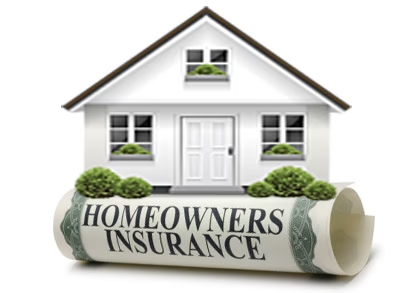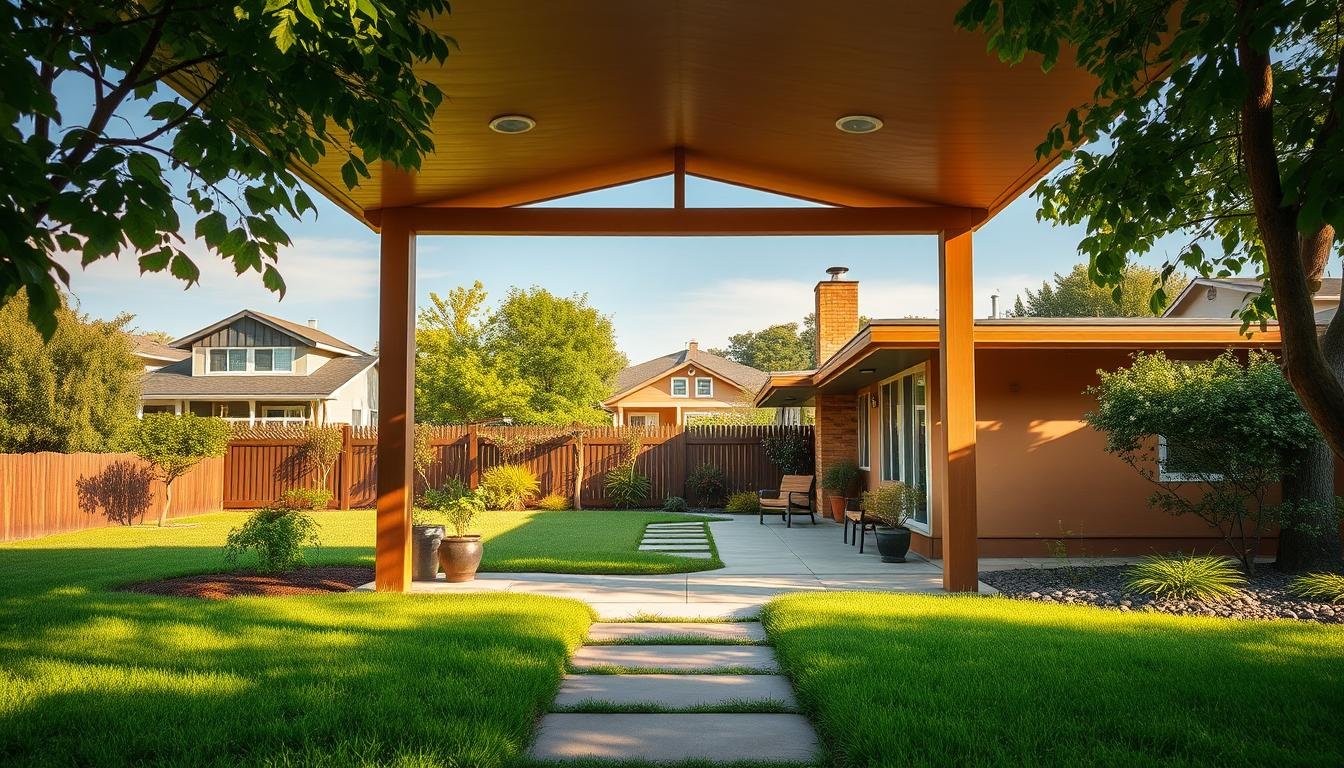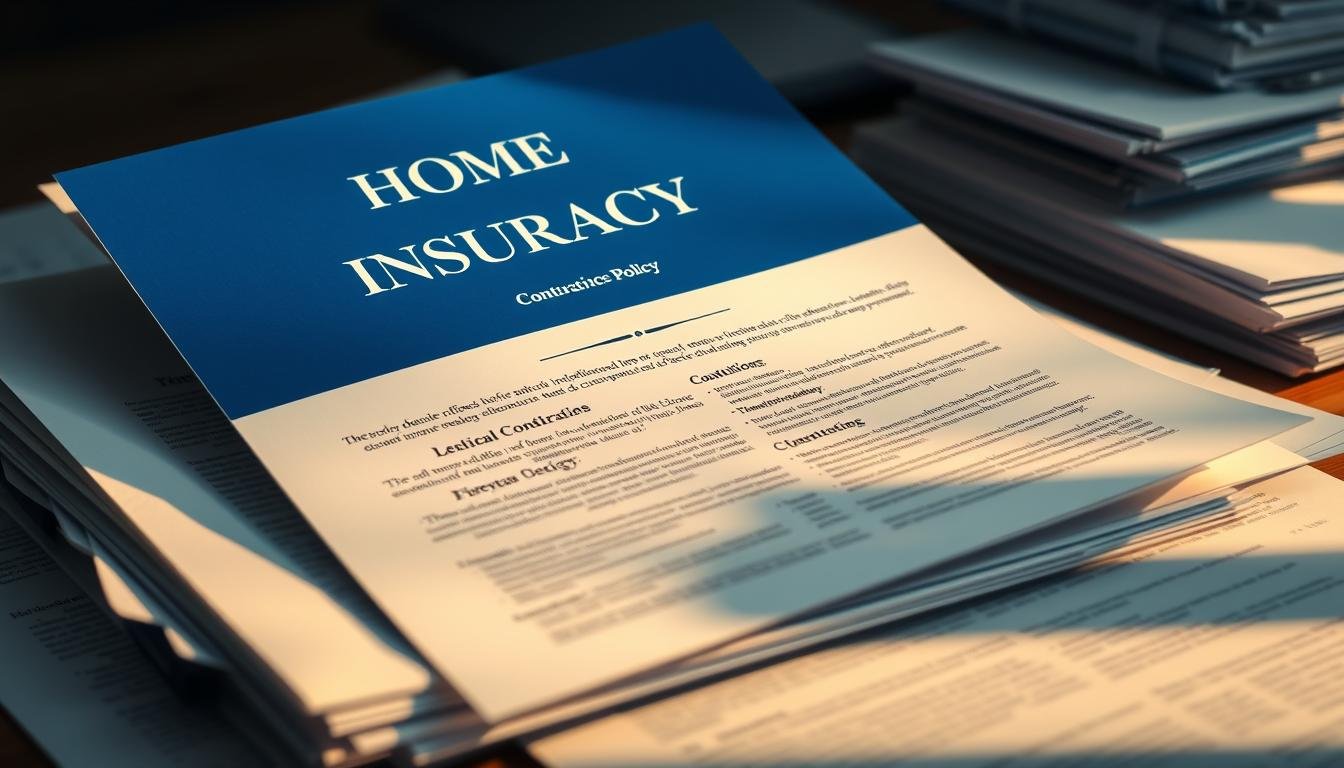Did you know 64% of U.S. homes are underinsured by an average of $200,000? That gap could leave families financially vulnerable if disaster strikes. Let’s break down how this critical safety net works so you can protect what matters most.
A homeowners insurance policy shields your property, belongings, and savings if unexpected events damage your house or someone gets hurt on your land. It typically covers repairs from fires, storms, or theft, and even pays temporary living costs if you can’t stay home. Think of it as a financial backup plan for life’s curveballs.
Every policy has a deductible – the amount you pay out-of-pocket before coverage kicks in. For example, if a tree crashes through your roof causing $10,000 in damage and your deductible is $1,000, you’d pay that first $1,000. Your insurer handles the rest. This system keeps premiums affordable while giving you control over costs.
Liability protection is equally crucial. If a guest slips on your icy driveway, your policy could cover their medical bills and legal fees. Most plans also include replacement cost for belongings like furniture or electronics, though high-value items like jewelry often need extra coverage.
Key Takeaways
- Policies cover property damage, stolen belongings, and liability risks
- Deductibles determine your upfront costs during claims
- Standard plans exclude floods and earthquakes – ask about add-ons
- Review coverage annually to match your home’s current value
- Compare quotes from multiple companies for better rates
Introduction to Homeowners Insurance
Your home is more than walls and a roof—it’s where memories grow. A homeowners insurance policy acts like a financial safety harness, catching you when unexpected events threaten your space. Think of it as three shields in one: repairs for your house, replacement of belongings, and protection if someone gets hurt on your property.
Breaking Down the Basics
Every policy has three key numbers: premium (what you pay monthly), deductible (your share during claims), and coverage limit (the max your insurer pays). Let’s say a winter storm collapses part of your garage. With a $1,000 deductible and $20,000 coverage limit, you’d cover the first $1,000—your insurer handles the rest up to $20,000.
“Proper coverage turns ‘What if?’ into ‘We’ve got this.'”
Why This Matters in America
From California wildfires to Midwest tornadoes, U.S. properties face unique risks. Without protection, rebuilding costs could drain savings. Liability coverage becomes crucial too—if a delivery person slips on your porch, medical bills and legal fees could otherwise cost thousands.
| Coverage Type | What’s Included | Real-Life Example |
|---|---|---|
| Dwelling Protection | Repairs to house structure | Fixing storm-damaged siding |
| Personal Property | Replacing stolen items | New laptop after burglary |
| Liability Shield | Guest injury costs | Covering broken arm from a fall |
Replacement cost vs. actual cash value determines how claims get paid. New sofa ruined in a flood? Replacement cost buys a similar new one—actual cash value deducts depreciation. Always review your declarations page annually to keep pace with your home’s current value.
Core Components of a Homeowners Insurance Policy
Imagine returning home to find a fallen tree crushing your roof – would your financial safety net hold? Every policy combines four essential shields: structure repairs, belongings replacement, liability coverage, and temporary housing funds. Together, they form your first line of defense against life’s surprises.
Coverage for Property Damage and Personal Belongings
Your dwelling protection handles damage to the main house and attached structures like garages. If a kitchen fire spreads, this coverage pays to rebuild walls and replace built-in appliances. Detached sheds or fences usually need separate coverage.
Personal property coverage protects movable items – from laptops to lawn chairs. Burglary? Your policy replaces stolen electronics up to your chosen limit. High-value items like jewelry often require scheduled endorsements for full value protection.
“Standard plans cover 16 common perils – including windstorms and accidental water damage – but always check your declarations page.”
Liability Protection and Additional Living Expenses
If a guest breaks their ankle on your icy walkway, liability coverage handles their medical bills and potential lawsuits. Most companies offer $100,000-$500,000 in standard protection – increase this if you have a pool or trampoline.
When disasters make your home unlivable, loss of use coverage becomes crucial. It reimburses hotel stays, restaurant meals, and pet boarding costs while contractors repair your house. Keep receipts – companies typically pay actual expenses rather than fixed amounts.
Understanding Homeowners Insurance Policies
Did you know your couch’s age could slash your insurance payout by 50%? How companies value your possessions determines whether you rebuild fully or face surprise costs. Let’s unravel two critical terms that shape your financial safety net.

Replacement Cost vs. Actual Cash Value
Replacement cost coverage buys new equivalents for damaged items. If a windstorm destroys your 7-year-old roof, this option covers brand-new materials. Actual cash value subtracts depreciation – that same roof might only get you 40% of its original value.
Here’s why it matters: A flooded living room with $15,000 furniture. Replacement cost gives you $15,000 for new couches and TVs. Actual cash value might pay $9,000 based on age and wear. Construction costs rose 34% since 2020 – outdated coverage limits could leave you short.
Making Sense of Financial Terms
Your deductible is your share before coverage starts. Choose $1,000 instead of $500? You’ll pay more per claim but save annually. Policy limits cap what insurers pay – review these yearly as home values change.
| Factor | Replacement Cost | Actual Cash Value |
|---|---|---|
| Payout Basis | New item price | Used item value |
| Premium Cost | Higher | Lower |
| Best For | Full recovery | Tight budgets |
“Ask your agent: ‘Does this limit cover rebuilding at today’s prices?'”
Adjust limits when renovating or buying pricey electronics. Keep photos and receipts for high-value items – it strengthens claims. Remember: Knowledge turns complex terms into power during policy reviews.
Types and Forms of Homeowners Insurance
Ever wonder why your neighbor’s policy costs less but covers more? The answer lies in standardized policy forms labeled HO-1 through HO-8. These codes determine what risks your plan addresses – and which ones it doesn’t.
Overview of HO-1 through HO-8 Policies
Basic coverage starts with HO-1. It protects against 10 specific risks like fire or vandalism. HO-2 adds more perils – think falling objects or plumbing leaks. Most single-family houses use HO-3 policies. These cover all risks except those specifically excluded, like earthquakes.
Own a condo? HO-6 handles shared walls and common areas. It covers your unit’s interior and personal items. Mobile home residents need HO-7, while historic properties often require HO-8’s special valuation methods.
| Policy Type | Best For | Key Coverage |
|---|---|---|
| HO-3 | Single-family homes | Open-peril structure protection |
| HO-5 | High-value properties | Full replacement cost |
| HO-4 | Renters | Personal belongings only |
Your policy form affects rebuild costs after disasters. HO-8 uses actual cash value for older homes, meaning you’ll cover more depreciation costs. Always ask your agent: “Does this form match my home’s age and construction type?”
Limits vary by policy. HO-1 might cap electronics at $1,500, while HO-5 could offer $10,000. Add endorsements for jewelry collections or flood protection. Next, we’ll explore how to customize these base plans with extra shields.
Endorsements and Optional Coverages for Your Home
Standard protection plans often miss unique risks hiding in plain sight. That’s where policy tweaks called endorsements come in – official amendments that customize your safety net. These upgrades help address modern challenges like cybercrime or appliance failures that basic plans overlook.

Enhancing Protection with Endorsements
Think of endorsements as specialized armor for specific vulnerabilities. A water backup endorsement covers sewage overflow repairs – a common exclusion in standard policies. Got a vintage engagement ring? Scheduled personal property coverage ensures full replacement value without depreciation deductions.
| Endorsement Type | Protection Scope | Typical Cost/Year |
|---|---|---|
| Equipment Breakdown | HVAC/Appliance Repairs | $50-$75 |
| Identity Fraud | Legal Fees & Recovery | $25-$50 |
| Ordinance Compliance | Updated Building Codes | $100-$300 |
Choosing Optional Add-Ons That Suit Your Needs
Start by listing your home’s unique features. Wine cellar? Consider spoilage coverage for power outage losses. Frequent travelers? Rental reimbursement helps if you need temporary housing during repairs.
“Your agent can match endorsements to local risks – like earthquake riders in California or hurricane deductibles in Florida.”
While add-ons increase premiums, they prevent massive out-of-pocket costs later. Review options annually – that new backyard pizza oven or solar panels might need special coverage. Customization turns generic protection into a tailored safety net.
How Homeowners Insurance Works: Claims and Processes
Picture this: A weekend storm leaves your living room soaked and your roof missing shingles. Knowing how to activate your protection plan turns panic into action. Let’s walk through what happens after unexpected damage strikes.
Filing a Claim and Documenting Damages
Act fast but stay safe. First, prevent further damage – cover broken windows or move valuables. Then contact your provider within 24-48 hours. Most companies offer apps for instant claim starts.
- Snap photos/videos of all damage from multiple angles
- Create a detailed inventory of affected items
- Save repair receipts and contractor estimates
Claims adjusters typically visit within 3-7 days. They’ll assess whether the cause (like wind or water) matches your covered perils. Replacement cost plans pay for new equivalents immediately. Actual cash value policies deduct depreciation first – you might receive partial funds upfront, then the rest after repairs.
| Document Type | Why It Matters | Example |
|---|---|---|
| Time-stamped photos | Proves damage occurred during policy period | Fallen tree timestamped before cleanup |
| Model numbers | Speeds up appliance replacements | Refrigerator serial number |
| Police reports | Validates theft-related claims | Burglary case number |
“Organized documentation can cut claim processing time by 40% – keep a dedicated folder for home records.”
Disputes often arise from unclear policy terms. If your adjuster denies part of your claim, request their evidence in writing. Many states allow independent appraisals. Remember: Your declaration page dictates coverage – review it before storms hit.
Risk Factors, Ratings, and Cost Considerations
What’s keeping your rates high? Insurers weigh 200+ factors when calculating premiums, but three elements dominate: your roof’s condition, neighborhood risks, and financial safeguards. A single claim can spike costs by 20% – but smart adjustments can trim expenses without cutting corners.
Factors That Affect Your Premium
Your zip code plays a bigger role than you might think. Homes in wildfire-prone areas pay 25% more on average, while properties near fire stations often get discounts. Outdated electrical systems or aging roofs? Those could add $300+ yearly to your bill.
Companies also track your claims history like a credit score. Two claims in three years might label you high-risk. Local crime stats matter too – installing motion lights and deadbolts could shave 5% off your premium.
Tips to Lower Your Insurance Costs
Boost your deductible from $500 to $1,000 and save up to 24% annually. Bundling auto and home plans often unlocks 15-25% discounts. Security upgrades pay dividends: monitored alarms reduce burglary risks and typically cut costs by 5-10%.
| Strategy | Potential Savings | Time Investment |
|---|---|---|
| Raise deductible | Up to 24% | 5-minute policy update |
| Add storm shutters | 8-12% | Weekend installation |
| Improve credit score | 10-35% | 6-month financial plan |
“Annual policy reviews catch coverage gaps before disasters strike – it’s like getting a free financial checkup.”
Construction costs jumped 34% since 2020 – update your dwelling coverage limits yearly. Those new smart home sensors? Mention them to your agent. Many companies now offer discounts for leak detectors and WiFi-enabled smoke alarms.
Conclusion
Your home’s safety net isn’t just paperwork—it’s peace of mind. A well-chosen policy acts as a financial shield against storms, accidents, and unexpected loss. Remember: replacement cost coverage helps rebuild with new materials, while actual cash value accounts for depreciation.
The core components—structure protection, belongings coverage, and liability safeguards—work together like puzzle pieces. Custom endorsements let you tailor this coverage to match unique needs, whether you collect art or host backyard gatherings.
Smart choices start with awareness. Review your policy limits annually, especially after renovations. Compare how different forms (like HO-3 vs. HO-5) address your home’s specific risks. Companies often offer discounts for security upgrades or bundled plans.
Ready to strengthen your protection? Grab your current policy and chat with your agent this week. Use this guide as a checklist to spot gaps and opportunities. With the right coverage in place, you’ll sleep better knowing your haven stands prepared for life’s surprises.
FAQ
What does a homeowners insurance policy cover?
It typically includes dwelling coverage for your house, personal property protection for belongings, liability coverage for accidents, and additional living expenses if you can’t stay home after a covered loss. Policies often protect against perils like fire, theft, or windstorms.
Why do I need liability protection?
Liability coverage helps pay legal fees, medical bills, or repair costs if someone gets hurt on your property. For example, if a guest slips on your icy driveway, this coverage can prevent you from paying out-of-pocket for their injuries.
What’s the difference between replacement cost and actual cash value?
A: Replacement cost pays to rebuild or repair your home at today’s prices, ignoring depreciation. Actual cash value factors in depreciation, so you’ll receive less for older items. Most experts recommend replacement cost for fuller protection.
How do policy limits and deductibles work?
Your policy limit is the maximum your insurer will pay for a covered claim. A deductible is what you pay first before coverage kicks in. Higher deductibles often mean lower premiums, but ensure you can afford the upfront cost if disaster strikes.
What are HO-1 through HO-8 policies?
These are policy forms offering varying levels of protection. For example, HO-3 covers most perils for your home and named risks for belongings, while HO-5 offers broader protection. HO-8 is designed for older homes where replacement cost exceeds market value.
Can I add extra coverage to my policy?
Yes! Endorsements let you customize protection for high-value items like jewelry, add flood insurance, or include identity theft recovery. Discuss options with your agent to fill gaps in standard policies.
How do I file a claim after damage?
Contact your insurer immediately, document losses with photos or videos, and keep receipts for temporary repairs. An adjuster will assess the damage. Be honest and detailed to avoid delays in reimbursement.
What factors influence my premium?
Your location, home’s age, claims history, and credit score can affect costs. To save, bundle policies, raise your deductible, or install safety features like smoke alarms. Comparing quotes every few years also helps find better rates.




